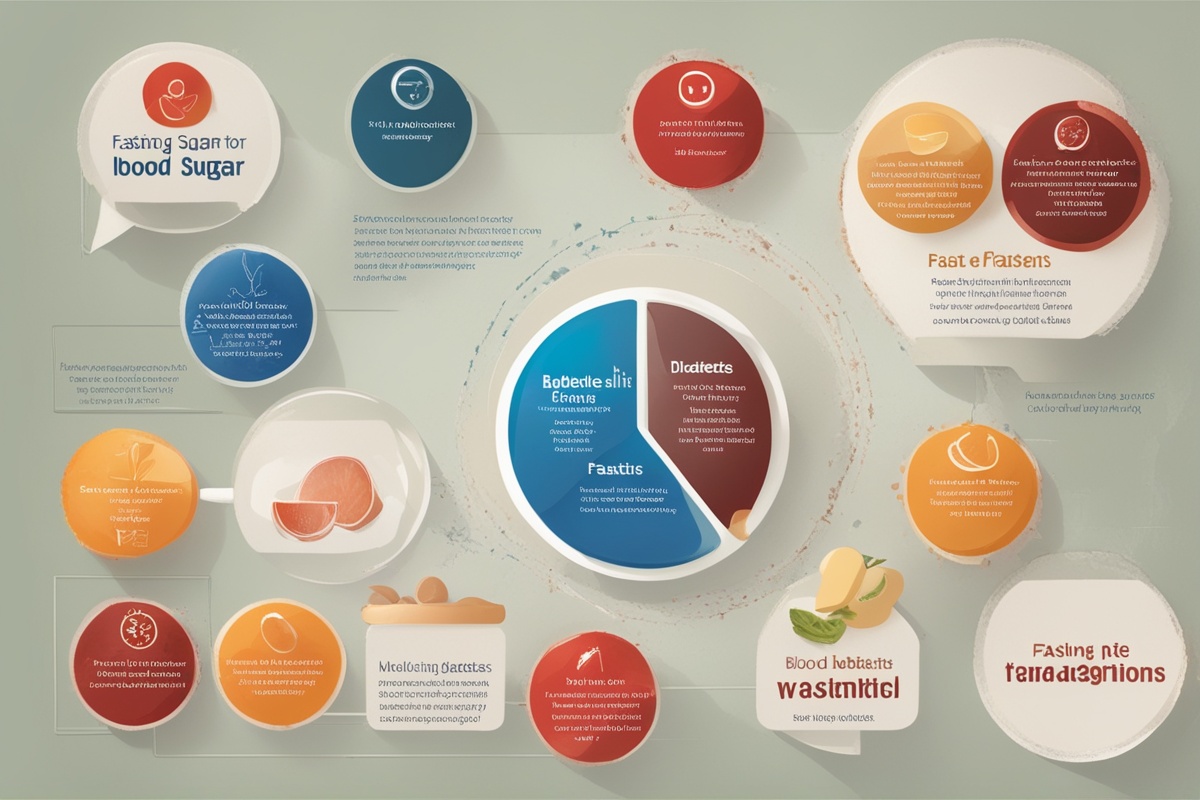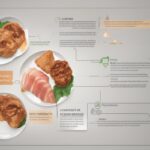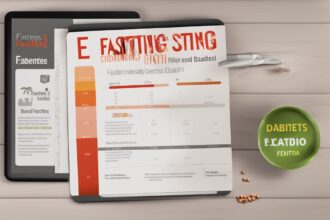Hey there, if you’re navigating the world of diabetes while exploring fasting as a health practice, you’re in the right place. Managing diabetes can feel like a tightrope walk, especially when you introduce fasting into the mix. But with the right approach to diabetes control, you can balance your blood sugar levels, improve your overall health, and even embrace fasting safely. In this comprehensive guide, we’ll dive into what diabetes management looks like for those who fast, blending practical tips with science-backed insights. Whether you’re fasting for religious reasons, weight loss, or metabolic health, I’ve got you covered with strategies to keep your blood sugar in check. Let’s explore how to master diabetes control without compromising your fasting goals.
Understanding Diabetes and the Role of Fasting
Diabetes, whether Type 1 or Type 2, is a chronic condition where the body struggles to regulate blood sugar levels due to insufficient insulin production or ineffective use of insulin. Fasting, which involves abstaining from food and sometimes drink for a set period, can be a powerful tool for metabolic health, but it poses unique challenges for diabetes control. Studies suggest that intermittent fasting may improve insulin sensitivity and help with weight management in Type 2 diabetes (Barnard et al., 2019). However, without proper planning, fasting can lead to dangerous spikes or drops in blood sugar. That’s why understanding your body’s needs and the science behind fasting is critical before diving in.
Why Diabetes Control Matters During Fasting
When you fast, your body shifts gears, relying on stored glucose and fat for energy. For someone with diabetes, this can be a double-edged sword. On one hand, fasting might help lower insulin resistance over time; on the other, skipping meals can mess with your blood sugar stability, risking hypoglycemia (low blood sugar) or hyperglycemia (high blood sugar). Effective diabetes management during fasting isn’t just about avoiding food—it’s about timing, monitoring, and preparation. According to the American Diabetes Association, people with diabetes should consult healthcare providers before fasting to avoid complications (ADA, 2021). So, let’s break down how to approach this safely.
Practical Tips for Safe Fasting with Diabetes
Fasting doesn’t have to be off-limits if you have diabetes, but it does require extra care. Here are some actionable strategies to maintain diabetes control while fasting. These tips are designed to help you stay safe, whether you’re doing a short intermittent fast or a longer religious fast like Ramadan.
- Consult Your Doctor First: Before starting any fasting regimen, talk to your healthcare provider or a diabetes specialist. They can adjust your medication or insulin doses to prevent dangerous blood sugar fluctuations.
- Monitor Blood Sugar Frequently: Invest in a reliable glucose meter and check your levels multiple times during fasting periods. This helps catch any issues early.
- Break Your Fast if Needed: If your blood sugar drops below 70 mg/dL or spikes above 300 mg/dL, don’t hesitate to break your fast with a small, balanced snack.
- Stay Hydrated: If your fast allows water, drink plenty to avoid dehydration, which can worsen blood sugar control.
Nutrition Strategies for Diabetes Management While Fasting
What you eat before and after fasting periods plays a huge role in blood sugar management. The goal is to fuel your body with foods that provide steady energy and prevent drastic glucose swings. Research shows that a diet rich in fiber and low in refined carbs can significantly improve glycemic control (Jenkins et al., 2017). Here’s how to structure your meals around fasting for optimal diabetes control.
- Focus on Low-Glycemic Foods: Before fasting, eat complex carbs like whole grains, legumes, and vegetables to keep blood sugar stable longer.
- Include Healthy Fats and Protein: Add avocados, nuts, or lean meats to your pre-fast meal to slow digestion and maintain energy levels.
- Avoid Sugary Drinks and Snacks: When breaking your fast, skip sugary sodas or desserts that can cause rapid blood sugar spikes.
- Portion Control is Key: Overeating after a fast can overwhelm your system, so start with small, balanced meals and eat slowly.
- Time Your Meals Wisely: If you’re doing intermittent fasting, plan your eating window to align with your body’s natural rhythm and medication schedule.
Medications and Fasting: What You Need to Know
For many people with diabetes, medications or insulin are non-negotiable. Fasting can complicate how these treatments work, as skipping meals changes how your body processes drugs like metformin or sulfonylureas. A study published in the Journal of Diabetes Research highlights that adjusting medication timing during fasting periods is crucial to prevent hypoglycemia (Hassanein et al., 2018). Always work with your doctor to tweak your dosage or schedule. For instance, if you’re on insulin, you might need to reduce your dose during fasting hours to avoid low blood sugar. Never stop or adjust meds on your own—professional guidance is essential for safe diabetes management.
The Science Behind Fasting and Blood Sugar Regulation
Let’s geek out for a minute on how fasting impacts your body when you’re focused on diabetes control. When you fast, your body first burns through stored glucose in the liver (glycogen) before switching to fat for fuel. This process can enhance insulin sensitivity over time, which is a win for Type 2 diabetes management (Barnard et al., 2019). However, the transition isn’t always smooth for everyone. Stress hormones like cortisol can rise during fasting, potentially increasing blood sugar in some individuals. That’s why personalizing your fasting approach and keeping tabs on your glucose levels are non-negotiable. The science supports fasting’s potential benefits, but only when done with caution and proper blood sugar management strategies in place.
In wrapping up, managing diabetes while fasting is absolutely doable with the right mindset and tools. It’s all about preparation, monitoring, and listening to your body. By prioritizing diabetes control, you can reap the potential benefits of fasting—whether it’s better insulin sensitivity, weight loss, or spiritual fulfillment—without putting your health at risk. Remember, this isn’t a one-size-fits-all journey. Work closely with your healthcare team, stay consistent with your blood sugar checks, and don’t be afraid to adjust your plan as needed. You’ve got this! Let’s keep the conversation going—drop your thoughts or experiences with fasting and diabetes management in the comments below.
References
- American Diabetes Association. (2021). Standards of Medical Care in Diabetes—2021. Diabetes Care, 44(Supplement 1), S1-S232.
- Barnard, N. D., Levin, S. M., & Trapp, C. (2019). Intermittent fasting and plant-based diets for weight loss and diabetes management. American Journal of Lifestyle Medicine, 13(5), 491-496.
- Hassanein, M., Al-Arouj, M., Hamdy, O., et al. (2018). Diabetes and Ramadan: Practical guidelines. Journal of Diabetes Research, 2018, 1-12.
- Jenkins, D. J., Kendall, C. W., & Augustin, L. S. (2017). Effect of legumes as part of a low glycemic index diet on glycemic control and cardiovascular risk factors in type 2 diabetes mellitus. Archives of Internal Medicine, 172(21), 1653-1660.






